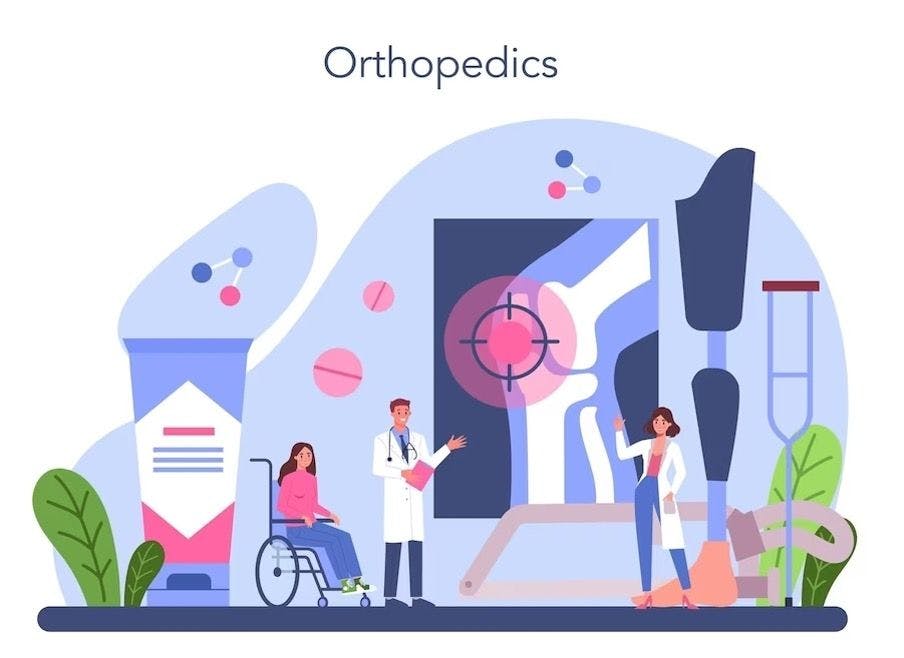The knee is a complex joint that plays a crucial role in providing stability and mobility to the lower body. However, it is susceptible to various injuries that can cause pain, discomfort, and limitation in movement. Understanding common knee injuries which affect the locking and unlocking of the knee joint is essential for their prevention, timely diagnosis, and effective treatment. In this article, we will explore different types of knee injuries, their causes, symptoms, treatment options, and preventive measures to maintain optimal knee health.
Introduction
The knee is one of the largest and most vulnerable joints in the human body. It comprises bones, ligaments, tendons, and muscles, all working together to facilitate smooth movement and weight-bearing activities. Unfortunately, knee injuries are prevalent among people of all ages and can occur due to various reasons such as sports activities, accidents, overuse, or degenerative conditions.
Knee Anatomy and Function
Before delving into specific knee injuries, it is important to have a basic understanding of knee anatomy and how it functions. The knee joint consists of three main bones: the femur (thigh bone), tibia (shin bone), and patella (kneecap). These bones are connected and stabilized by ligaments, such as the anterior cruciate ligament (ACL) and posterior cruciate ligament (PCL), and supported by tendons and muscles.
13 Common Knee Injuries
- Sprains and Strains
Sprains and strains are common knee injuries that can result from sudden twists, falls, or overstretching of the ligaments and muscles around the knee joint. A sprain refers to the stretching or tearing of a ligament, while a strain involves the stretching or tearing of a muscle or tendon.
Symptoms of sprains and strains include pain, swelling, limited range of motion, and difficulty bearing weight on the affected knee. Immediate rest, ice, compression, and elevation (RICE) are recommended for initial management. In severe cases, medical intervention and physical therapy may be necessary to promote healing and restore knee function.
Additionally, you can measure using a medical app or healthcare software. It can keep consumer information in a CRM program or data management app for future reference. This kind of healthcare CRM software primarily gathers client information and stores it for later analysis. Such an evaluation provides crucial information on numerous characteristics of each customer.
- Anterior Cruciate Ligament (ACL) Injury
The anterior cruciate ligament (ACL) is one of the major ligaments in the knee responsible for providing stability. ACL injuries often occur during sports activities involving sudden stops, changes in direction, or direct blows to the knee. Athletes, especially those involved in high-impact sports, are particularly prone to ACL injuries.
Common symptoms of an ACL injury include a popping sound at the time of injury, swelling, instability, and difficulty walking. Diagnosis is typically confirmed through physical examination, imaging tests, and sometimes, arthroscopy. Treatment options may include conservative management with rehabilitation exercises or surgical intervention, depending on the severity of the injury and the individual’s activity level.
- Meniscus Tear
The meniscus is a C-shaped piece of cartilage that acts as a cushion between the femur and tibia, absorbing shock and providing stability to the knee joint. A meniscus tear can occur due to forceful twisting or degenerative changes in the knee.
Symptoms of a meniscus tear may include pain, swelling, stiffness, locking, and a sensation of the knee giving way. Treatment options for meniscus tears depend on factors such as the location, size, and severity of the tear, as well as the individual’s age and activity level. Conservative measures, such as rest, ice, medication, and physical therapy, are often recommended initially. In some cases, arthroscopic surgery may be necessary to repair or remove the torn meniscus.
- Patellofemoral Pain Syndrome (PFPS)
Patellofemoral pain syndrome (PFPS), also known as runner’s knee, is a common knee condition characterized by pain around the front of the knee, particularly behind or around the patella. PFPS often occurs due to overuse, muscle imbalances, or improper tracking of the patella within the femoral groove.
Symptoms of PFPS include a dull, aching pain around the kneecap, especially during activities that involve knee bending or prolonged sitting. Management of PFPS typically involves a combination of rest, physical therapy exercises to strengthen the muscles around the knee, orthotics or bracing, and modifying activities that aggravate symptoms.
- Patellar Tendonitis
Patellar tendonitis, also known as jumper’s knee, is an injury characterized by inflammation or degeneration of the patellar tendon. It commonly affects athletes involved in jumping and running activities that place repetitive stress on the knee joint.
The symptoms of patellar tendonitis include pain and tenderness just below the kneecap, swelling, and difficulty with activities that involve jumping or kneeling. Treatment options may include rest, ice, physical therapy exercises to strengthen the quadriceps and improve biomechanics, medication for pain management, and in severe cases, corticosteroid injections or surgery.
- Osteoarthritis of the Knee
Osteoarthritis is a degenerative joint disease that can affect any joint, including the knee. It occurs when the protective cartilage that cushions the ends of bones gradually wears away, leading to pain, stiffness, and reduced mobility.
Causes of knee osteoarthritis include age-related wear and tear, previous knee injuries, obesity, and genetic factors. Symptoms may include joint pain, swelling, stiffness, and difficulty walking or climbing stairs. Treatment options for knee osteoarthritis focus on pain management, improving joint function, and maintaining an active lifestyle. These may include lifestyle modifications, pain medications, physical therapy, assistive devices, and in severe cases, surgical interventions such as joint replacement.
- Iliotibial (IT) Band Syndrome
Iliotibial (IT) band syndrome is a common knee injury often experienced by runners and cyclists. It occurs when the iliotibial band, a thick band of connective tissue that runs along the outside of the thigh from the hip to the knee, becomes irritated and inflamed.
Symptoms of IT band syndrome include pain and tenderness on the outer side of the knee, especially during activities such as running or cycling. Treatment typically involves rest, ice, stretching exercises, and addressing underlying biomechanical issues contributing to the condition. Physical therapy and the use of foam rollers or massage techniques can help alleviate symptoms and promote healing.
- Bursitis
Bursitis is the inflammation of the bursae, small fluid-filled sacs that act as cushions between bones, tendons, and muscles. Knee bursitis can occur in different locations around the knee, such as the prepatellar bursa in front of the kneecap or the pes anserine bursa on the inner side of the knee.
Common causes of knee bursitis include repetitive kneeling, direct trauma, overuse, or underlying conditions such as rheumatoid arthritis or gout. Symptoms may include pain, swelling, warmth, and limited range of motion. Treatment options for knee bursitis include rest, ice, compression, and elevation (RICE), along with the use of nonsteroidal anti-inflammatory drugs (NSAIDs) and, in some cases, aspiration of excess fluid or corticosteroid injections.
- Patellar Dislocation
Patellar dislocation occurs when the kneecap (patella) slips out of its normal position, usually towards the outer side of the knee joint. It can result from sudden changes in direction, direct trauma, or an underlying anatomical abnormality.
Symptoms of patellar dislocation may include severe pain, swelling, visible deformity, and difficulty straightening the knee. Immediate medical attention is necessary to reset the kneecap and address any accompanying ligament or cartilage damage. Rehabilitation exercises, bracing, and, in severe cases, surgical intervention may be recommended to prevent future dislocations and restore stability to the knee joint.
- Knee Fractures
Knee fractures involve the breaking of one or more bones in the knee joint, such as the patella, femur, or tibia. Fractures can result from high-energy trauma, falls, or sports injuries.
Symptoms of a knee fracture include severe pain, swelling, deformity, inability to bear weight, and limited range of motion. Treatment depends on the type and severity of the fracture but may involve immobilization with a cast or brace, realignment of the bones (reduction), and surgical intervention if necessary. Rehabilitation and physical therapy play a crucial role in the recovery process, helping to restore strength, mobility, and function.
Conclusion
Recognizing and addressing common knee injuries is crucial for maintaining knee health, reducing pain, and promoting optimal mobility. By understanding the various types of knee injuries, their causes, symptoms, and treatment options, you can take proactive steps to prevent injuries, seek appropriate medical care when needed, and engage in rehabilitation to restore knee function.
Remember, if you experience persistent knee pain, instability, or difficulty with daily activities, it’s important to consult with a healthcare professional for a proper diagnosis and treatment plan tailored to your specific needs.
Take care of your knees, prioritize injury prevention, and enjoy an active and healthy lifestyle.



Comments are closed.